ROCKPOOLING IN VENTNOR
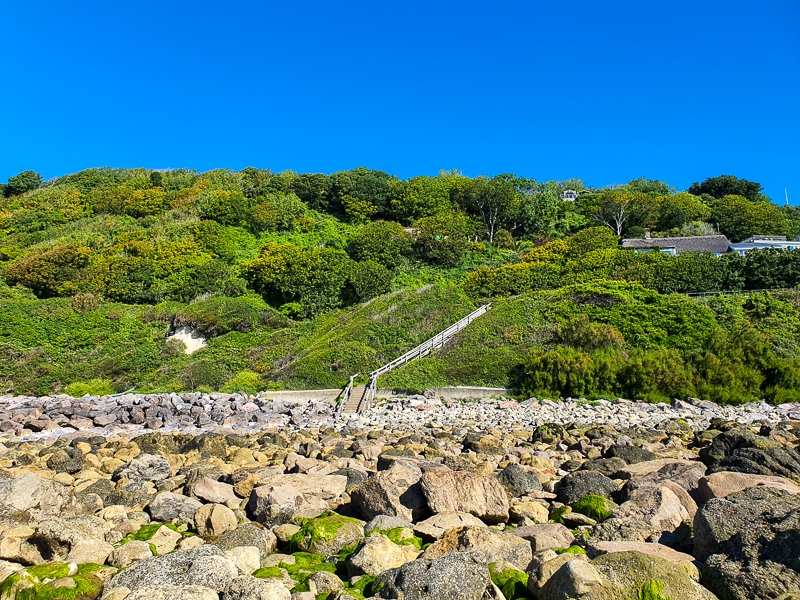
I arrive at Ventnor's cliff top car park at 8.30am. Low tide. We're leaving the day after tomorrow, so I'm trying to take it all in, remember it, store it for later like a squirrel hiding nuts.
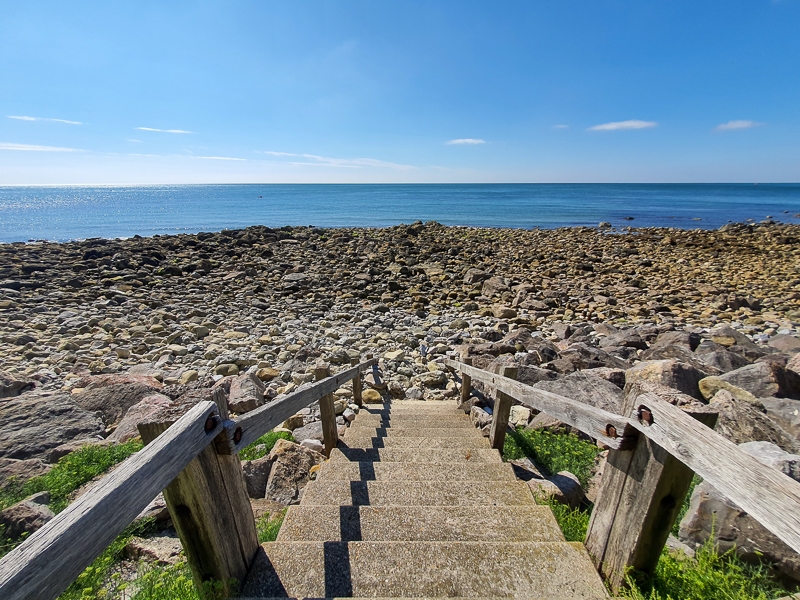
I clamber over the rocks towards the sea. At first, I'm disappointed - there don't seem to be many rock pools to look at. Instead, I follow the rocks along the front of the gentle waves, peering into gaps where the sea flows in and out.
The disappointment was fleeting. I'm immediately drawn in by the seaweed - so many types and colours. Long, stringy green seaweed that looks like hair. Bright green, frilly seaweed like lettuce. One with wide, orangey-yellow ovals that I've never seen before and that doesn't make an appearance in my ID book.
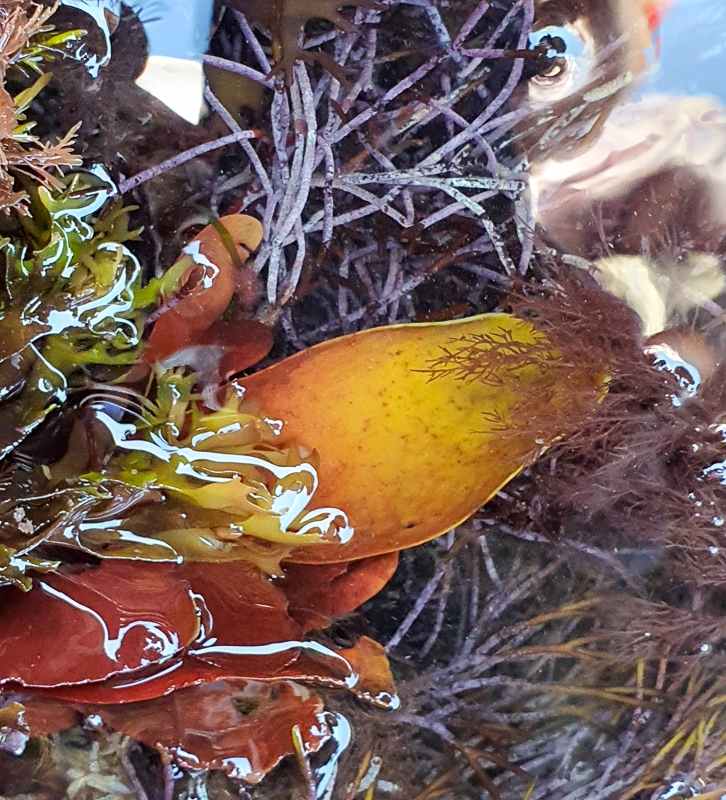
As I'm admiring the seaweed, I hear it, in between the waves. The limpets! If you ever see me looking half-crazed on the beach, smiling and laughing to myself, it will be because I've heard the limpets again.
I lean in and examine their tiny world. While I'm listening to the limpets go about their day, I watch a thin, green worm the length of my hand work their way up the rock, away from the water. I wonder who they are and where they're going. My ID book suggests a green-leaf worm, out hunting smaller invertebrates.
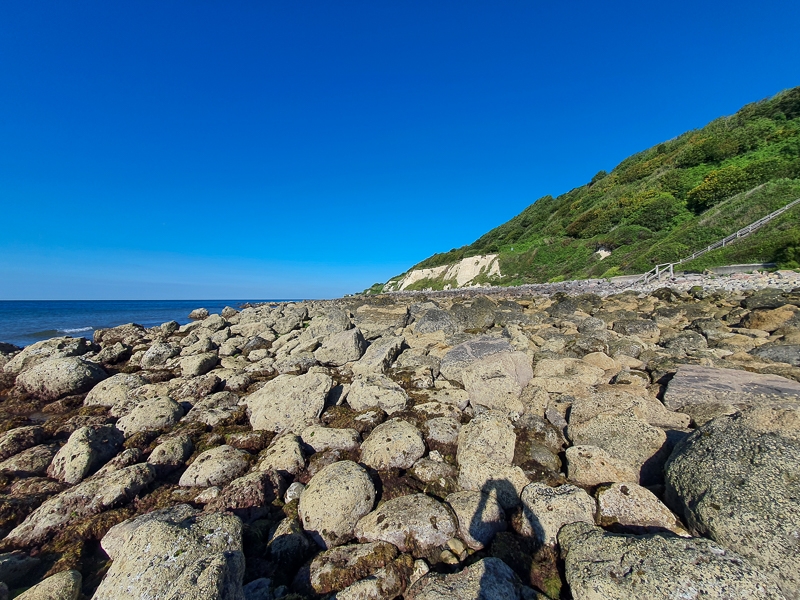
I move to another rock and sit looking at empty limpet scars. On this beach, there are lots of limpet homes that don't have occupants; more scars than there are limpets, to a far greater extent than at St Helen's. I wonder why this is - are the birds around here especially good at feeding on limpets? Or is there a human reason for their disappearance?
One limpet it hauling herself over the edge of a corner on the rock. Her precarious position balanced on the precipice of the rocky protusion gives me the best views I've had yet of the creature beneath the shell. I see her foot rooting to the rock, edging forwards, stalks waving around, touching and retreating, and her mouthpiece, fastened onto the rock in front.
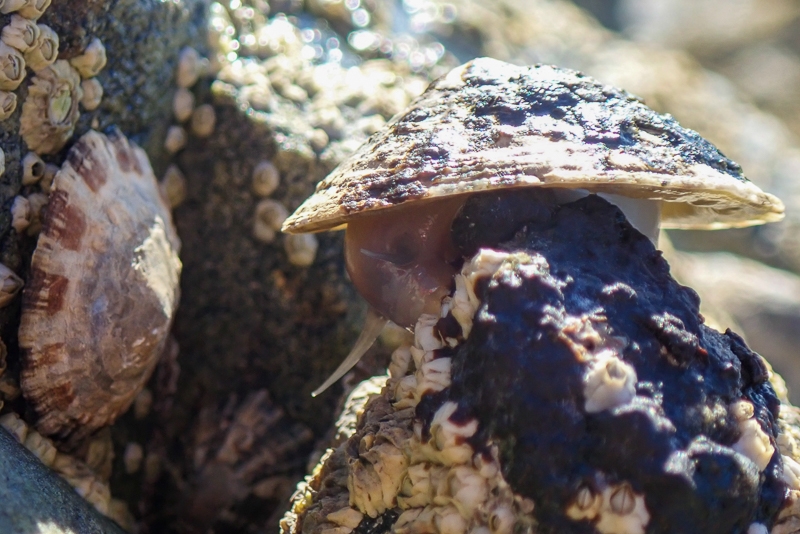
As she progresses over the corner, there's something of a limpet collision.
A smaller limpet is in the cliff scaler's path. At first, their shells butt together, forcing the smaller limpet to lower its shell. But then the smaller becomes more active, moving away until the peak of his shell is below the edge of the larger limpet. The bigger limpet rises up, putting her mouthpiece onto the shell of the smaller limpet. For a wild moment, I wonder if she's starting to eat the shell of the other, but the smaller limpet speeds away and the larger returns to the barnacles.
Limpet drama averted, I turn my attention to a dog whelk on a rock to my right. I hadn't seen any on St Helen's, but from here I can spot a handful. Their shells are bleach white, and - unlike most of the limpets - they seem to be entirely still.
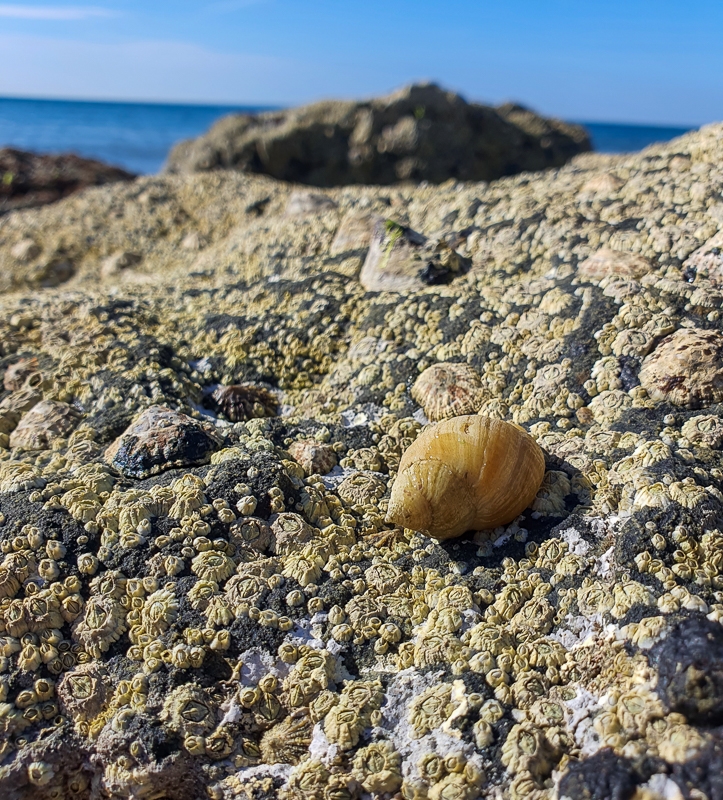
As I'm rising to leave the limpet rock, I spot another limpet stretching out over a rocky precipice. This one is sporting a rather fetching sea lettuce hat, and I take a photo of her face coming up over the edge, hat in full splendour. The shape of the limpet's body under the shell - big, flat foot, separate, squared mouth, reminds me of sea cows.
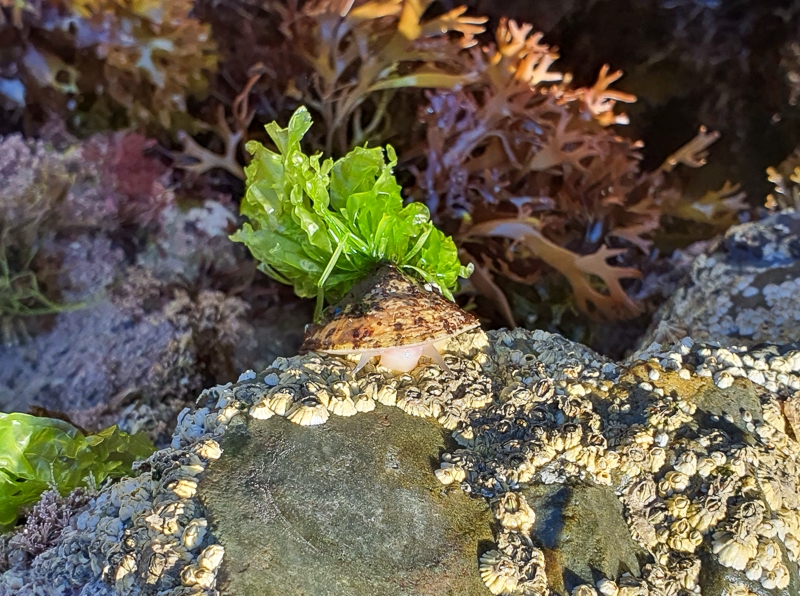
A limpet with a fetching sea lettuce hat
As I gaze into the last pool this morning before retreating to write this, I see another white dog whelk. I take my attention away for a few minutes - looking at the seaweed and the limpets - and when I look back, the sea has covered the shell.
It's no longer bleach white, but green, dark red, brown and grey. Identifying coastal species is difficult because many look similar, and is made all the more difficult by the magical colour-changing that goes on in and out of the water. Add to this the fact that many species exhibit wildly different colour and pattern variations and you'll see why most people are content to generalise identification here.
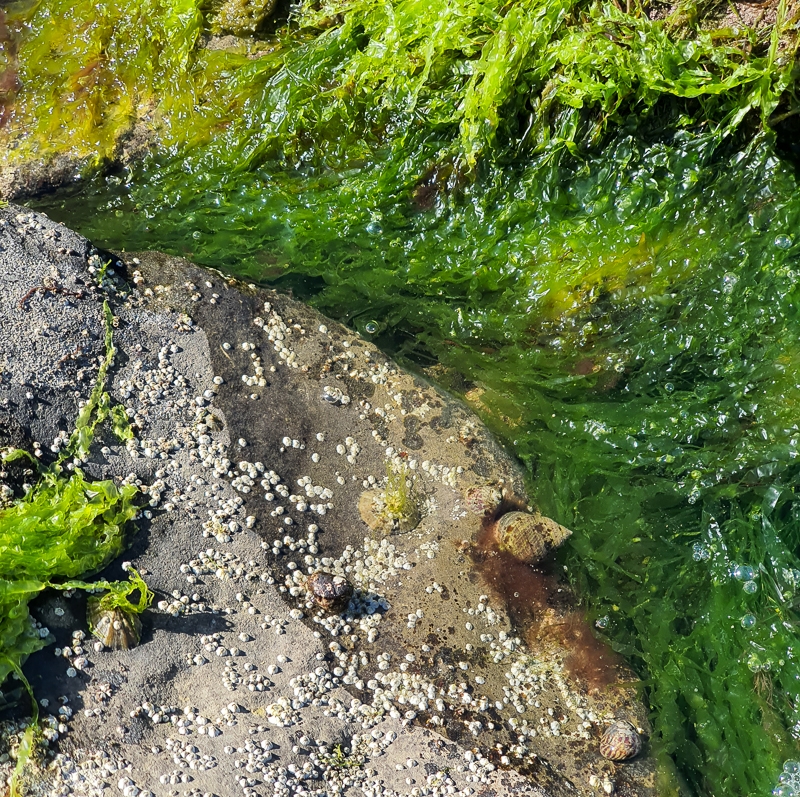
What I've learnt this morning is that rock pools - or rocky shores - are never boring. There's always something happening here. All you have to do is sit and look. Your ability to watch amazing feats, dramas, mini worlds, seaweed gardens and busy creatures is limited only by how long you can sit on the shore.
It's 10am and the sun is already baking hot. I sit at the top of the rocky beach, bum in a shiny, quartz-like rocky depression, back against a concrete sea defence. There's a plant around me that I can't identify, getting ready to come into flower. Above me, I can hear lizards moving around on the bank. One runs out in front of my feet and rests on the rock in the sunshine, like she's joining me in taking in the views.
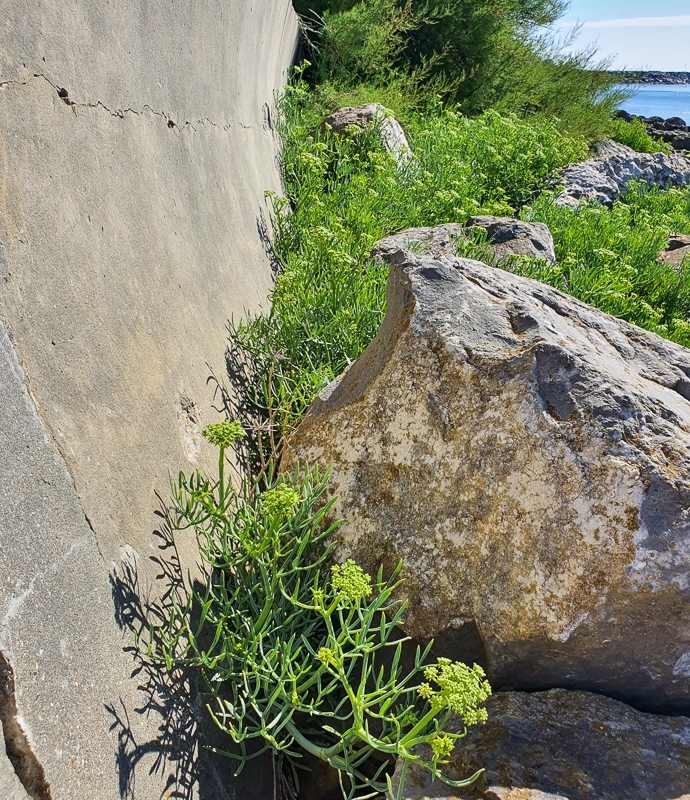
Find out five really cool things about limpets here, read about the first time I heard limpets here, and see my review of the book that started these limpet shenanigans here!
Share with your friends
Subscribe to learn more
Join me in exploring our natural world and cultural heritage as we learn how to protect and restore it. Get notified on my latest posts and a monthly newsletter on wider conversation topics for us to chat about.
Recent Posts
If you enjoyed this one, then you might like these too.